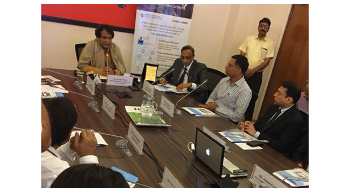
Digital textile print to grow by 17.5%
Double digit growth across 2016-2021, is making digital textile printing one of the most exciting market opportunity in the print and textile supply sectors according to the latest exclusive market data from Smithers Pira.
Double digit growth across 2016-2021, is making digital textile printing one of the most exciting market opportunity in the print and textile supply sectors according to the latest exclusive market data from Smithers Pira. The Future of Digital Textile Printing to 2021 values this global market at €1.17 billion in 2016 with growth forecast at an annual average of 12.3 per cent for 2016-2021. This will see the market more than double in value over five years, reaching €2.42 billion in 2021.
Smithers’ exclusive analysis tracks how this will drive an even more rapid increase in the volume of fabric printed with inkjet equipment – from 870 million m² in 2016 to 1.95 billion m² in 2021 – a 17.5 per cent CAGR. This is buttressed by data on and analysis of rising global ink consumption and pricing, and a comprehensive survey of the state-of-the-art in textile printing equipment.
In 2016 for textiles the market share for digital processes is 2.8 per cent of overall volume. But digital’s share is set to boom in a segment where the mean growth is just 3 per cent. As this develops, major print companies are increasingly taking an interest in the textile segment, fostering the development of new business models, printheads, inks, media, and high throughput machinery.
The greatest acceleration across the study period will be in clothing, which has the key sub-segments of fashion, haute couture and sportswear. Household textiles are predicted to grow at the next fastest rate. Displays and signage are growing somewhat more slowly –from a larger base – but will maintain double digit annual growth across the Smithers study period, which will convert into the largest absolute increase in value for 2016-2021. Technical textiles will lose ground slightly, which is indicative of a lack of visibility of, or focus on, these smaller niche markets.
CATEGORIES Industry Update
TAGS digital printingdigital textile printingdigital textilesprinting industrytextile newsTextile printing



